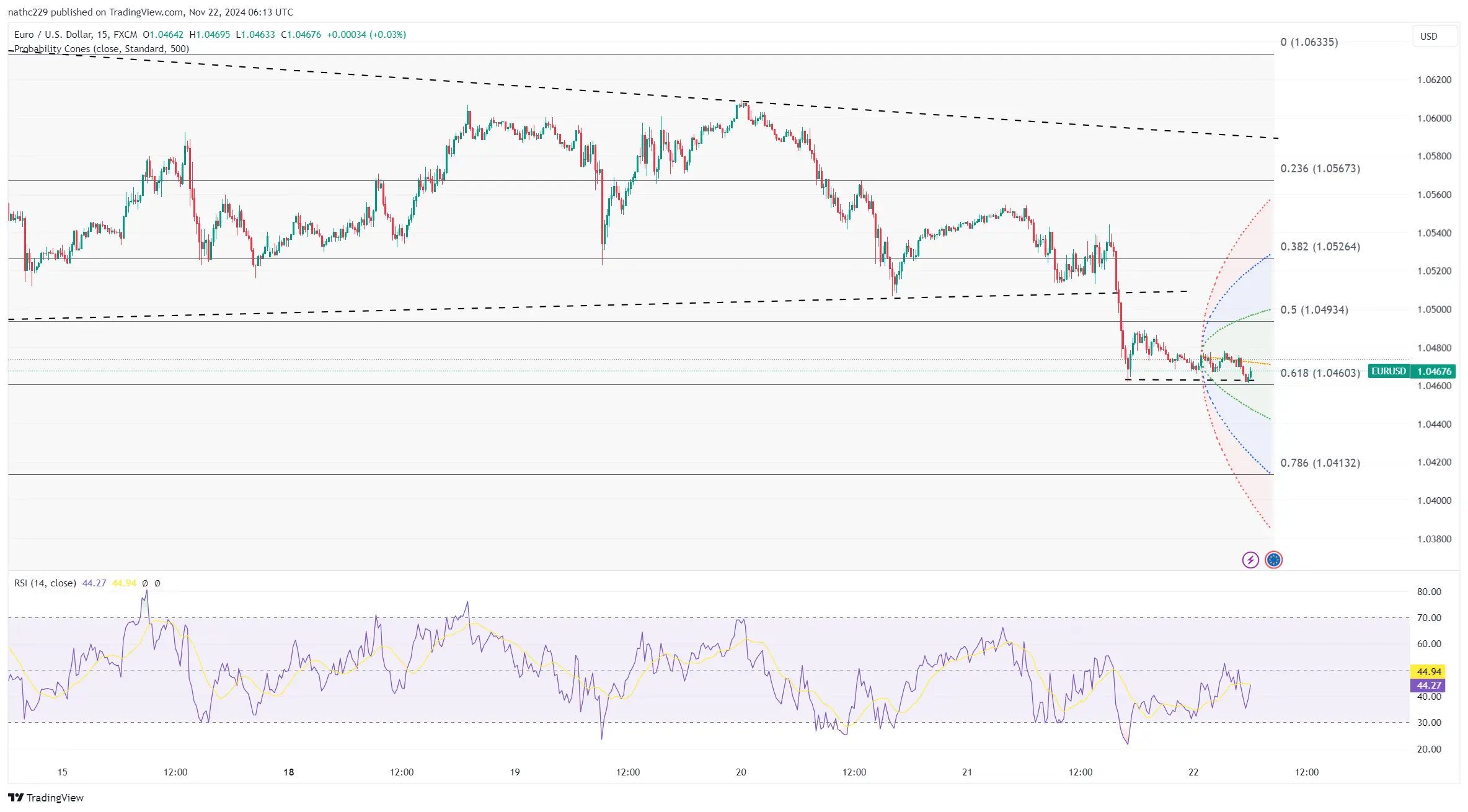EUR/USD Struggles Amid Rising Energy Costs and Sovereign Debt Risks

EUR/USD closed Thursday near session lows, weighed down by fundamental concerns and technical bearish signals. Rising energy prices, fueled by colder weather, have amplified stress on euro area economies, with natural gas prices reaching a 1-year high. While increased U.S. gas imports could alleviate some of the strain, the trade implications could exacerbate downward pressure on EUR/USD. The ECB's recent Financial Stability Review further highlighted risks, including rising sovereign debt and policy uncertainty, which have driven widening yield spreads among euro zone economies, making it harder for the euro to mount a sustained recovery.
From a technical perspective, EUR/USD's break below the Nov. 14 low at 1.0462 confirmed bearish momentum, completing a flag pattern. The pair's inability to hold above the 5-DMA underscores continued weakness, while falling RSI indicators suggest further downside potential. Key support at 1.0450 is now in focus, with a decisive break exposing parity as a potential medium-term target. On the upside, initial resistance at 1.0545 must be cleared to challenge the broader bearish trend, though momentum favors sellers for now.
Upcoming November PMIs and German Q3 GDP data on Friday will be critical for EUR/USD's direction. Weak results could solidify expectations of an economic slowdown, increasing pressure on the euro and potentially triggering a deeper selloff. Should the data surprise to the upside, EUR/USD could see a short-term rebound, but broader concerns about energy prices and sovereign debt remain significant headwinds for the pair.

